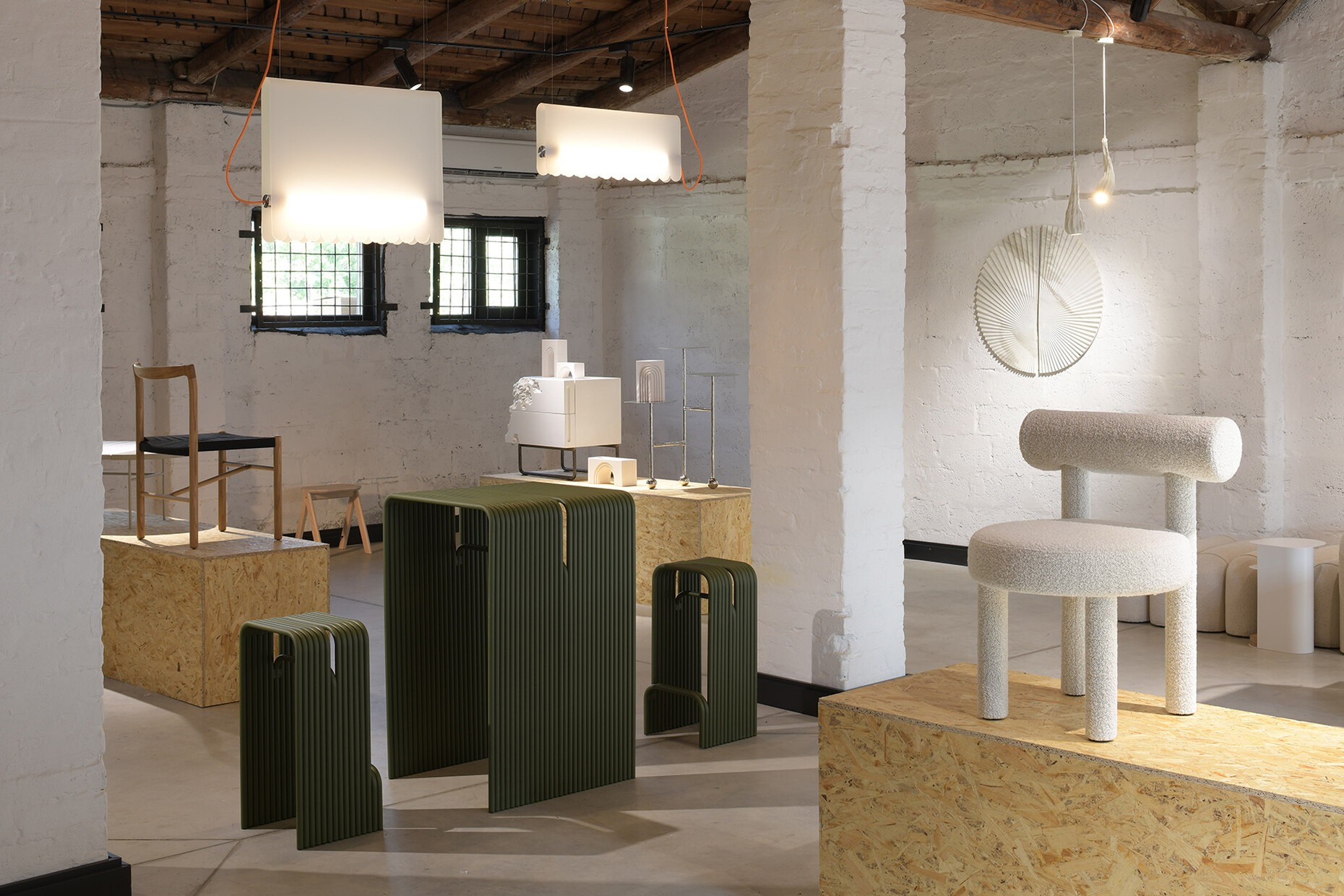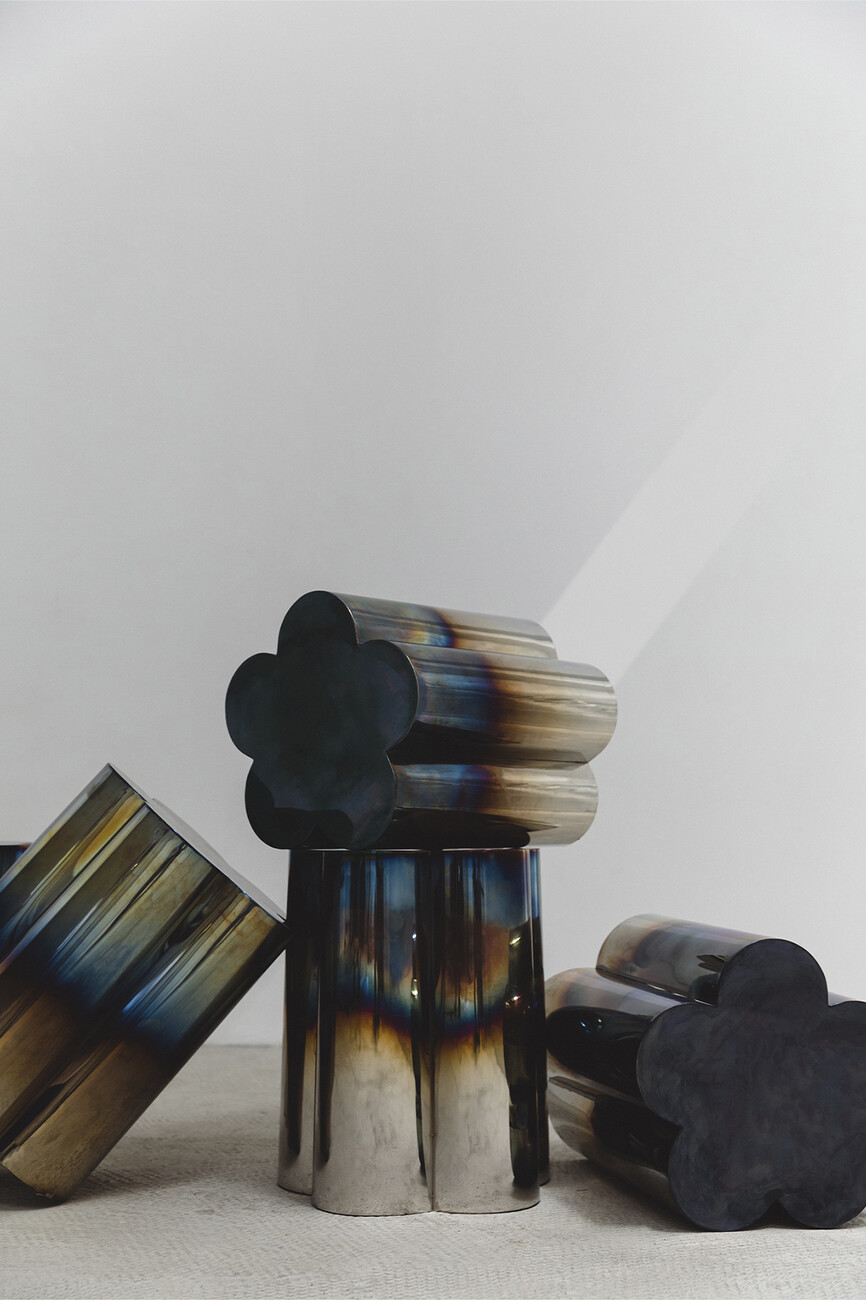Against all odds
Anna Moldenhauer: What was your conclusion of the DVRZ Design days in Kyiv?
Larysa Tsybina: It was absolutely positive and very important for our local creative community and for the Ukrainian community. We showed our resilience and belief in the future one more time with such an event during the war. On the other hand, it was very interesting to see the different approaches of the designers, handcrafted and unique pieces as well as industrial design for mass production. After our victory, we hope that more attention will be paid to production, creatives and culture in Ukraine. We have now really understood who we are and that we are very different from Russia. We are very open-minded, we dream about the future and about escaping this nightmare. For example, recently there was another bomb attack in Kyiv, and it was near my house, so there are no windows left in my flat in some parts.
How do you work, how do you organize exhibitions like the DVRZ in the middle of the war?
Larysa Tsybina: The sense of time and the possibilities we have in Ukraine are currently very different from European standards. We have learned to realise projects in a very short time and under very difficult conditions. It took us only one and a half months from the idea to the exhibition. Before our exhibition "Ukraine: Design for Real Time", which was presented at the Barcelona Design Museum in 2022 and in 2023 was part of the Ukrainian pavilion at the London Design Biennale, I worked for two years on reporting about Ukrainian design through design objects and creative communities, and I travelled a lot. I talk about Ukraine through design. When I came back to Kyiv, I realised that we also need to talk to Ukrainians on the ground about our resilience and our faith. Even in the global world, any design is a very local discipline. So I suggested to my friends who have a location in the industrial area to get together Ukrainian designers and Ukrainian productions, workshops that are working and producing now. For the design of this exhibition we collected 18 participants who gave us some budget for the organisation.
Anait, what was your concept for the exhibition architecture?
Anait Danielian: I was really excited about the idea of organising the exhibition in Kyiv because I really believe that design development happens in different phases and that development is not possible without facing each phase. We already have the education and the practice and we should have feedback from the audience and from our users. And about the architecture of the site: the site is an industrial area and therefore dangerous for visitors. So the first task was to make visitors understand how to move and where to go. It was a lot about human psychology and how people think in this place. We didn't have time for complicated constructions, we had to work very quickly. We also had two shelters on the site in case of an attack – the Russian attackers usually come at night, around three in the morning.
How do you selected the creatives for the exhibition?
Larysa Tsybina: We had a clear guideline for the selection. Firstly, it had to be a Ukrainian production. Secondly, that the item could be mass produced. Thirdly, that the creators are only industrial designers and professional designers and that the material is used sensibly. We are a very rich country and we have a lot of materials and resources, but part of it is not accessible now because it is on the occupation territory or the industry is partially destroyed. So in this situation we have to develop new design methods to create what is really needed and use the materials that are available to us. We also held master classes and workshops on upcycling. While setting up the exhibition, we also prepared the objects for the London Design Biennale, methamorphic industrial forms made from six Ukrainian materials. It was a kind of design reflection in real time. Designers are not like artists, they have to choose a task, not their own reflection. But our contemporary times are very hard, so personal reflections on the situation automatically enter their work. So we organise exhibitions and educational platforms, also workshops on upcycling.
You are in close contact with all the creative people in your sector, in your design and architecture scene. How do the creatives deal with their situation?
Larysa Tsybina: Our inspiration is different at the moment. We do the tasks necessary in wartime to support Ukrainians and Ukrainian design despite the difficult conditions. But still, the studios and workshops in Ukraine continue to work when they are not in the occupied territories. They are producing more functional than emotional objects at the moment.
How do you finance the project?
Larysa Tsybina: Our partners were three ukranian companies and one from Canada. It was enough for the exhibition, and we even donate a part of the money to a medical center for ukrainian soldiers.
”We are strong, we stand together and we are ready to work.“
Anait can you tell me from your view a little bit: What is the message you want to bring with your work?
Anait Danielian: I would say that the most important force for Ukrainians and Ukrainian society, like Ukrainian designers and society in general, is preservation. We should help each other, because only as one organism can we move forward. That is the main reason for everyone to work, to find money to realise such a project at this time. We all worked for one and a half months without a holiday, without a schedule, under night attacks, just to move forward together. And I think that is the most important message we want to send to the world: We are strong, we stand together and we are ready to work. Work with us because we are alive and ready to work with you in high quality.
Are you starting at the moment a new project?
Anait Danielian: Now I'm working on some interior projects here in Ukraine, not quite like before the war, of course. And I am developing my new project – project design and production, ceramic gifts. I will try to show it in Europe, in the world, for example at Maison et Object in Paris.
What about you Larysa, could you tell me about your current projects?
Larysa Tsybina: After the successful exhibition in Ukraine, we will develop a design system in Ukraine. We will build it together, as a Ukrainian community, and will strive for a progressive exchange of knowledge and innovations with the whole friendly world. Maybe it will be an educational project, maybe it will be a workshop cluster, maybe it will be a new bigger event. But I think that next year we will be at the Kyiv Design Days, and of course I will continue to talk to the whole progressive design world to design messages about the local situation.
Anait Danielian: Now we are just an example of local design, but I think that in the future it will be very interesting to bring the Ukrainian experience in design to the world. To show another way to develop design, to create places of joy and creativity in the middle of a war. We have to stand together.
















